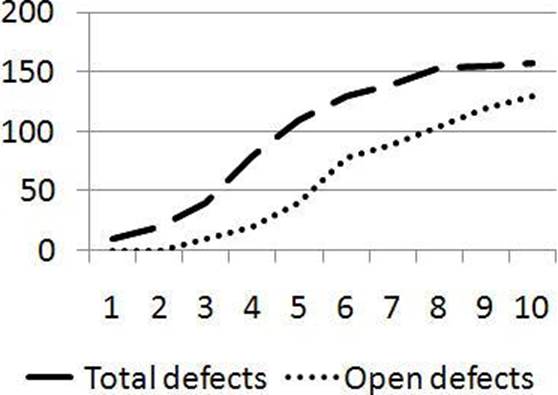ISTQB CTFL Foundation ISTQB Certified Tester Foundation Level Online Training
ISTQB CTFL Foundation Online Training
The questions for CTFL Foundation were last updated at Nov 23,2024.
- Exam Code: CTFL Foundation
- Exam Name: ISTQB Certified Tester Foundation Level
- Certification Provider: ISTQB
- Latest update: Nov 23,2024
As a result of the RAD based development approach, the test manager has decided to change the risk mitigation approach .
Which test technique might be most appropriate to use? 2 credits
- A . Decision Table Testing
- B . Boundary Value Analysis
- C . Error Guessing
- D . Exploratory Testing
As a result of the RAD based development approach, the test manager has decided to change the risk mitigation approach .
Which test technique might be most appropriate to use? 2 credits
- A . Decision Table Testing
- B . Boundary Value Analysis
- C . Error Guessing
- D . Exploratory Testing
Regarding the process described above, what is the most important recommendation you would make using IEEE 1044 as a guide? 2 credits
- A . No priority or severity assigned
- B . Incident numbering is manual rather than automated
- C . No mentioning of reproduceability
- D . No classification on type of incident
Topic 20, Scenario 12 “Automatic Teller Machine (ATM)”
You are a test manager in charge of integration, system and acceptance testing for a bank. You are working on a project to upgrade an existing ATM to allow customers to obtain cash advances from supported credit cards. The system should allow cash advances from 20 to 500, inclusively, for all supported credit cards. The supported credit cards are American Express, VISA, Eurocard and Mastercard.
In the master test plan the following items are listed in the section named “items and/or features to be tested”:
I All supported credit cards
II Language localization
II Valid and invalid advances IV Usability
V Response time
Given is the following defect removal chart reported at the end of system testing – showing total defects detected and closed defects (fixed and successfully retested). A number of open defects are classified as critical. All tests have been executed.

Based on the chart above, what is the most appropriate next test phase? 1 credit
- A . Acceptance testing to verify the business process
- B . Acceptance testing to verify operational requirements
- C . Requirements testing as part of testing regulatory compliance
- D . Another system test cycle to verify defect resolution
Relying only on the information provided in the scenario, select the TWO items and/or features for which sufficient information is available to proceed with test design. 2 credits
- A . All supported credit cards
- B . Language localization
- C . Valid and invalid advances
- D . Usability
- E . Response time
Given the following figures for the testing on a project, and assuming the failure rate for initial tests remains constant and that all retests pass, what number of tests remain to be run? 3 credits

- A . 700
- B . 720
- C . 784
- D . 570
Continuing with the Scenario described in the previous question, which of the following topics would you need to address in detail in the master test plan? 3 credits
- A . An approach to regression testing
- B . A list of boundary values for “advance amount”
- C . A description of dependencies between test cases
- D . A logical collection of test cases
Topic 21, Mix Questions Set A
When assembling a test team to work on an enhancement to an existing system, which of the following has the highest level of test independence?
- A . A business analyst who wrote the original requirements for the system.
- B . A permanent programmer who reviewed some of the new code, but has not written any of it.
- C . A permanent tester who found most defects in the original system.
- D . A contract tester who has never worked for the organization before.
Consider the following pseudo code:
1 Begin
2 Read Time
3 If Time < 12 Then
4 Print(Time, "am")
5 Endif
6 If Time > 12 Then
7 Print(Time 12, "pm")
8 Endif
9 If Time = 12 Then
10 Print (Time, "noon")
11 Endif
12 End
How many test cases are needed to achieve 100 per cent decision coverage?
- A . 1
- B . 2
- C . 3
- D . 4
Acceptance test cases are based on what?
- A . Requirements
- B . Design
- C . Code
- D . Decision table
Latest CTFL Foundation Dumps Valid Version with 338 Q&As
Latest And Valid Q&A | Instant Download | Once Fail, Full Refund

